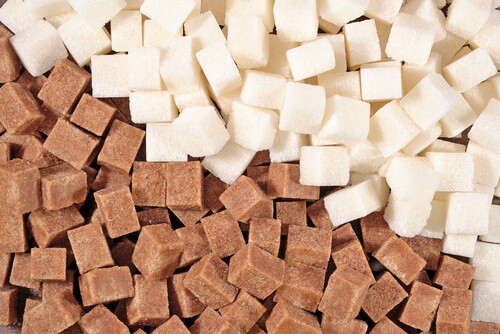All You Need to Find Out About Sugar Beet Vs Sugar Cane: Insights Into Their Roles in the Cane Sugar Industry
The sugar sector relies heavily on both sugar beet and sugar cane, each offering unique benefits and difficulties. Comprehending their cultivation methods, geographical circulation, and nutritional influences exposes significant distinctions. As customer choices change, the market faces pressing needs for sustainability and development. Checking out these facets can supply deeper insights right into the future of sugar and their functions in the global market. What developments exist ahead for these vital crops?
Review of Sugar Beet and Sugar Cane
Sugar beet and sugar cane are two key resources of sucrose, each with special qualities and cultivation approaches. Sugar beet, a root veggie, flourishes in pleasant climates and is usually grown in areas with cooler temperatures. It has a high sugar web content, normally around 16 to 20 percent, which is drawn out through a procedure of slicing and diffusion. On the other hand, sugar cane is a tropical grass that grows in warm, moist climates. Its stalks can consist of 10 to 15 percent sucrose, and the extraction process generally involves squashing the stalks to launch the juice.Both crops play considerable duties in the worldwide sugar sector, with sugar beet mainly cultivated in Europe and The United States And Canada, while sugar cane is mainly expanded in nations like Brazil, India, and China. Sugar beet vs sugar cane. This geographical distribution shows the various climatic needs and agricultural practices fit per plant, influencing their particular payments to sugar production worldwide
Farming Methods and Expanding Conditions
The growing methods and expanding problems for sugar beets and sugar cane vary substantially because of their distinctive soil and environment needs. Sugar beetroots thrive in cooler climates with well-drained, productive soils, while sugar cane likes warmer temperature levels and can endure poorer soils. Furthermore, the harvesting techniques for both crops differ, showing their one-of-a-kind growing methods and ecological adaptations.
Soil Requirements Comparison
While both sugar beet and sugar cane are crucial sources of sugar, their soil demands mirror unique choices that affect cultivation techniques and expanding conditions. Sugar beets thrive in well-drained, fertile dirts abundant in organic issue, with a pH series of 6.0 to 8.0. This kind of soil supports their deep taproots, allowing nutrient absorption. Alternatively, sugar cane likes productive, sandy loam or clay soils that retain moisture, preferably with a pH in between 6.0 and 7.5. The origin system of sugar cane is much more substantial, calling for dirt that can sustain its growth in a more water-retentive environment. These varying soil requirements demand customized agricultural practices to maximize returns for every crop, stressing the value of soil management in their growing.
Climate Flexibility Distinctions

Collecting Strategies Overview
Harvesting methods for sugar beet and sugar cane vary substantially because of their unique growing methods and expanding conditions. Sugar beet is typically collected mechanically utilizing specialized equipment that uproots the plants and divides the roots from the foliage. This procedure is generally carried out in cooler months to avoid putridity. In comparison, sugar cane harvesting typically entails manual work or mechanized cutters, where stalks are reduced short. This technique is done throughout the completely dry season to reduce the dampness content, which can impact sugar return. In addition, the timing of the harvest is critical, as both crops need to be gathered when they get to peak sugar concentration for effective handling.
Geographic Circulation and Production Statistics
Both sugar beet and sugar cane serve as essential sources of sucrose, their geographic circulation and manufacturing stats reveal notable distinctions. Sugar cane mostly flourishes in exotic and subtropical climates, with major manufacturing areas including Brazil, India, China, and Thailand. In contrast, sugar beet is mainly cultivated in warm regions, with leading producers located in Europe, the USA, and Russia.According to current stats, international sugar cane manufacturing substantially goes beyond that of sugar beet. In 2021, sugar cane made up approximately 79% of total sugar manufacturing worldwide, while sugar beet added around 21%. Brazil continues to be the globe's biggest sugar manufacturer, generally from sugar cane, creating over 38 million metric heaps every year. Meanwhile, the USA is just one of the leading sugar beet manufacturers, producing about 5 view million metric tons yearly. Sugar beet vs sugar cane. These statistics emphasize the important function each plant plays in the international sugar sector

Nutritional Differences and Health Impacts
The nutritional structure of sugar beet and sugar cane differs considerably, influencing their corresponding wellness influences. Sugar beet has a tendency to consist of higher levels of particular nutrients, while sugar cane supplies a various set of nutrients. Understanding these distinctions is crucial for assessing their effects on health and dietary choices.
Nutrient Composition Comparison
When comparing the nutrient make-up of sugar beet and sugar cane, significant differences emerge that can influence health and wellness results. Sugar beetroots are recognized to give a greater focus of essential nutrients, including vitamins B6 and C, potassium, and magnesium. On the other hand, sugar cane tends to have lower levels get more of these nutrients, mostly working as a carbohydrate source. Sugar beets also include nutritional fiber, which is valuable for gastrointestinal health, while sugar cane lacks this component. In addition, the visibility of anti-oxidants in sugar beets contributes to potential health advantages, unlike sugar cane, which is mostly composed of sucrose. These differences highlight the differing nutritional profiles of both resources, which could influence consumer selections and nutritional considerations.

Wellness Results Summary
While both sugar beet and sugar cane are widely made use of for sugar manufacturing, their unique nutritional accounts result in differing wellness effects. Sugar beet typically consists of greater levels of minerals and vitamins, such as potassium and magnesium, adding to better overall nutritional value. On the other hand, sugar cane's juice is abundant in anti-oxidants, which might offer additional health and wellness benefits.However, both sources mainly yield sucrose, which, when consumed in excess, poses risks such as weight problems, diabetic issues, and heart condition. The glycemic index of sugar cane is usually slightly lower than that of sugar beet, potentially making it a much better option for blood sugar administration. Inevitably, moderation is vital for both kinds to mitigate damaging health and wellness impacts connected with high sugar intake.
Ecological Considerations in Sugar Production
Although sugar production from both sugar beet and sugar cane offers economic benefits, it additionally raises significant environmental worries. The growing of these crops often involves extensive land usage, which can lead to habitat destruction and loss of biodiversity. Additionally, making use of plant foods and pesticides in sugar farming contributes to soil deterioration and water pollution, influencing local ecosystems.The high water intake required for watering, especially in sugar cane manufacturing, worsens water scarcity problems in some areas. Moreover, deforestation for expanding sugar cane plantations has actually been linked to boosted greenhouse gas exhausts, even more adding to environment change.Sustainable farming techniques, such as crop rotation and natural farming, are crucial to reduce these environmental influences. Industry stakeholders are significantly recognizing the demand for responsible growing approaches to ensure the lasting feasibility of sugar manufacturing while reducing harm to the world.
Economic Relevance in the Global Market
The ecological difficulties linked with sugar manufacturing highlight the requirement to examine its find out here economic value in the worldwide market. Sugar beet and sugar cane are critical to the farming economic situation, adding substantially to the resources of millions worldwide. In 2022, the worldwide sugar market was valued at roughly $50 billion, with sugar cane accounting for most of manufacturing. Countries such as Brazil, India, and China are leading producers, affecting global supply chains and pricing structures. The competitors between sugar beet and sugar cane additionally impacts neighborhood economies, as farmers pick crops based upon market demands and climatic problems. In addition, the sugar industry sustains ancillary industries, consisting of food processing and biofuel manufacturing, boosting its general economic impact. As customer preferences shift in the direction of healthier alternatives, the economic characteristics of sugar manufacturing might develop, necessitating ongoing analysis of its market importance in an altering international landscape.
Future Trends and Innovations in Sugar Production
As the international need for sugar proceeds to progress, innovations in sugar production are arising to address sustainability and effectiveness challenges. One remarkable trend is the raised adoption of precision farming technologies, which enable farmers to maximize returns while minimizing environmental effects. Furthermore, improvements in reproducing methods, such as CRISPR genetics editing and enhancing, are being discovered to create sugar crops with enhanced resistance to insects and diseases, thus reducing the demand for chemical inputs.Moreover, the integration of eco-friendly power sources in sugar processing plants is gaining grip, assisting to lower carbon impacts. The trend in the direction of bioprocessing is likewise significant, as business want to transform spin-offs right into value-added products like biofuels and bioplastics. Customer preferences are shifting in the direction of all-natural sweeteners, motivating research right into different resources like stevia and monk fruit, which might reshape the landscape of the sugar sector in the coming years.
Regularly Asked Concerns
Just How Do Sugar Beet and Sugar Cane Preference In Different Ways?
Sugar beet and sugar cane display distinctive taste accounts. Sugar beet often tends to have a somewhat natural sweetness, while sugar cane offers a much more robust, syrupy sweetness, adding to their special culinary applications and choices amongst consumers.
Can Sugar Beet and Sugar Cane Be Made Use Of Interchangeably in Recipes?
Sugar beet and sugar cane can be utilized mutually in recipes, though their flavors and sweet taste degrees might differ slightly. Modifications could be necessary to achieve the preferred taste and structure in culinary applications.
What Are the Byproducts of Sugar Beet and Sugar Cane Processing?
The by-products of sugar beet and sugar cane handling include molasses, bagasse, and pulp (Sugar beet vs sugar cane). These materials are made use of in animal feed, biofuel manufacturing, and different commercial applications, enhancing sustainability and minimizing waste in the sugar sector
Exist Any Alternate Makes Use Of for Sugar Beet Besides Sugar Production?
The different usages for sugar beet extend beyond sugar manufacturing. They include livestock feed, biofuel manufacturing, and the extraction of plant-based chemicals, showcasing sugar beet's adaptability within farming and commercial applications.
Exactly How Does Climate Adjustment Affect Sugar Beet and Sugar Cane Crops?
Climate change influences sugar beet and sugar cane plants by changing temperature and rainfall patterns. Boosted warm stress and anxiety, dry spell, and moving pest populaces can minimize yields, testing farmers to adapt their methods for sustainable manufacturing.